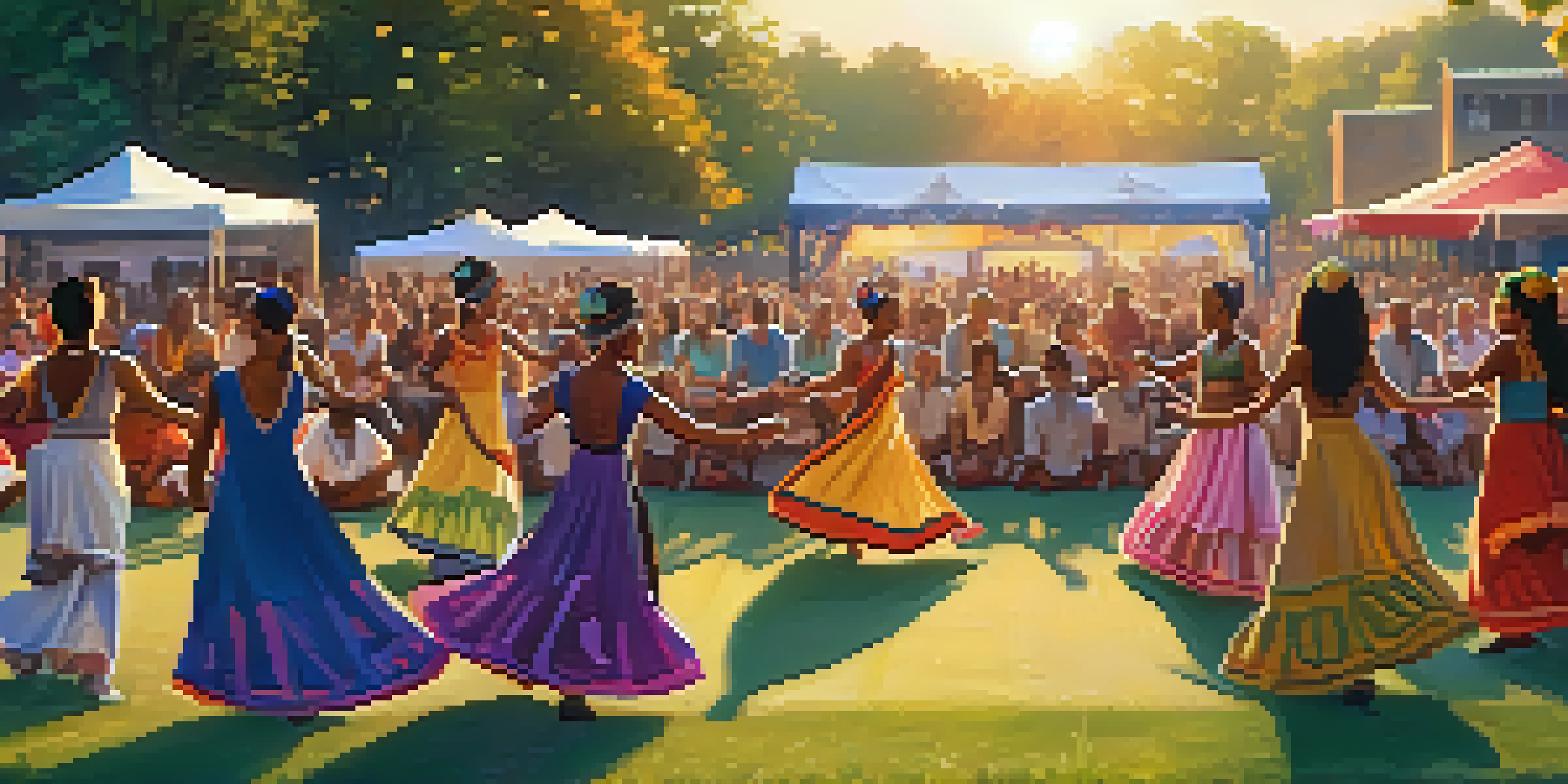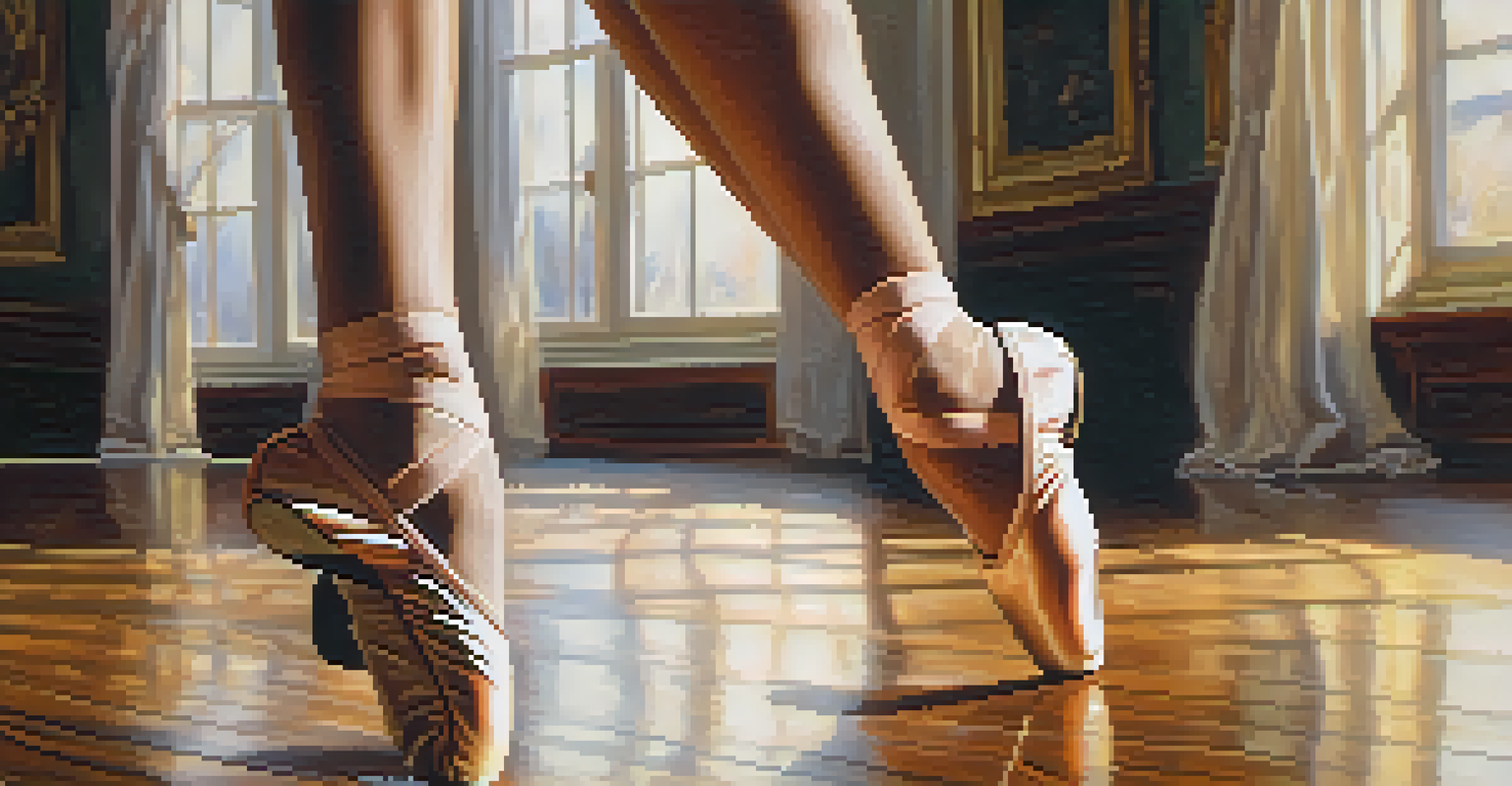Dance Funding Disparities: A Public Policy Perspective

Understanding Dance Funding Disparities in the Arts
Dance funding disparities refer to the unequal allocation of resources within the dance community, affecting both artists and organizations. Many dance companies, especially those in marginalized communities, struggle to secure adequate funding to thrive. This inequality often stems from systemic issues in public policy that prioritize certain art forms over others, leaving dance at a disadvantage.
Art is not a luxury; it is a necessity. It is the essence of our culture and our humanity, and it deserves to be funded and supported.
For instance, large institutions often receive significant grants and sponsorships, while smaller, community-based dance groups may be overlooked. This can create a ripple effect, leading to fewer opportunities for dancers from diverse backgrounds to showcase their talent. By understanding the root causes of these disparities, we can begin to address the larger issues at play in arts funding.
Moreover, recognizing the cultural significance of dance as a form of expression and community engagement is crucial. When funding focuses disproportionately on popular or mainstream art forms, it diminishes the value of dance in its many forms. Thus, advocating for equitable funding is essential for fostering a vibrant and inclusive dance community.
The Role of Public Policy in Dance Funding
Public policy plays a pivotal role in determining how arts funding is allocated, including for dance. Policymakers often dictate the flow of resources based on various priorities, which can inadvertently marginalize dance. Understanding the intricacies of how these decisions are made can shed light on potential reforms that could lead to more equitable funding.

For example, government funding bodies may prioritize projects that align with current political or economic agendas, leaving dance companies scrambling for support. This creates a cycle where only the most popular dance forms receive attention, while innovative or community-oriented projects struggle to survive. By advocating for policies that recognize the unique needs of the dance sector, we can help ensure that all forms of dance receive adequate funding.
Dance Funding Disparities Persist
The unequal allocation of resources in dance funding often leaves marginalized communities struggling to secure support.
Furthermore, a shift in public policy can also foster collaboration between various art forms. By encouraging interdisciplinary funding strategies, policymakers can highlight the interconnectedness of different artistic expressions, ultimately benefiting the dance community. This collaborative approach can lead to richer, more diverse cultural offerings for audiences.
Challenges Faced by Underfunded Dance Organizations
Underfunded dance organizations often face a myriad of challenges that hinder their growth and sustainability. From limited rehearsal space to inadequate marketing resources, these constraints can stifle creativity and limit outreach. Dancers and choreographers may find it difficult to create impactful work when basic operational needs are unmet.
The arts are not a luxury, but a necessity. They are essential to our well-being, our economy, and our society.
Additionally, the lack of funding can lead to a cycle of instability, where organizations are forced to cut programs or reduce staff. This not only affects the artists directly involved but also limits the community's access to dance as an art form. When funding is scarce, it becomes increasingly difficult to engage audiences and build a loyal following.
Moreover, the absence of financial support can also affect the quality of training and mentorship available to emerging dancers. Without proper resources, these organizations may struggle to attract experienced instructors or provide comprehensive training programs. This ultimately impacts the next generation of dancers, perpetuating the cycle of underfunding and underrepresentation.
Impact of Economic Inequality on Dance Funding
Economic inequality significantly influences the landscape of dance funding, creating barriers for many artists. Communities with fewer financial resources often find themselves at a disadvantage when competing for grants and sponsorships. This disparity highlights the connection between economic conditions and access to the arts, particularly dance.
For instance, affluent areas may enjoy a wealth of resources, including established dance institutions that attract funding. In contrast, economically disadvantaged communities may lack the infrastructure to support artistic endeavors, leaving dancers and choreographers without the support they need. Addressing these economic disparities is crucial for leveling the playing field in dance funding.
Public Policy Shapes Funding Outcomes
Decision-making in public policy significantly influences the distribution of funding, often marginalizing dance organizations.
Additionally, economic inequality can also affect audience engagement and participation in dance. When ticket prices are high, or access to free community programs is limited, many potential audiences are excluded. This further exacerbates the funding crisis, as organizations struggle to build a supportive audience base when economic barriers prevent participation.
Advocating for Equitable Dance Funding Policies
Advocating for equitable dance funding policies requires a concerted effort from the dance community and its supporters. Grassroots movements can play a vital role in raising awareness about the disparities faced by underfunded organizations. By mobilizing artists, audiences, and policymakers, the dance community can push for changes that promote fair funding practices.
Engaging in dialogue with local and state governments is essential for effecting change. Dance organizations can present data and personal stories that illustrate the impact of funding disparities, fostering empathy and understanding among decision-makers. This approach can help shift perspectives and encourage policymakers to prioritize dance in their funding agendas.
Moreover, collaboration with other arts organizations can amplify advocacy efforts. By joining forces with different artistic disciplines, the dance community can present a united front in demanding equitable funding. This collective action not only strengthens the case for dance funding but also enriches the broader narrative of the arts as a vital part of society.
Case Studies: Successful Dance Funding Initiatives
Examining successful dance funding initiatives can provide valuable insights into effective strategies for equitable funding. For instance, some cities have implemented grant programs specifically designed to support diverse dance forms and underrepresented communities. These initiatives not only provide financial resources but also foster a sense of belonging and empowerment among dancers.
One notable example is the establishment of dance festivals that prioritize inclusivity and accessibility. By creating platforms for emerging artists to showcase their work, these festivals help bridge the funding gap and cultivate new audiences. This not only benefits individual dancers but also enriches the cultural landscape of the community as a whole.
Economic Inequality Affects Access
Communities facing economic disparities encounter barriers in accessing funding and participating in dance, limiting opportunities for artists.
Furthermore, partnerships between dance organizations and local businesses can also create innovative funding solutions. By collaborating on community events or sponsorship initiatives, dance companies can tap into new revenue streams while promoting local engagement. These case studies illustrate that with creativity and collaboration, it is possible to overcome funding disparities and support a thriving dance community.
The Future of Dance Funding: Trends and Opportunities
Looking ahead, the future of dance funding is poised for transformation as new trends emerge. The rise of digital platforms for fundraising and audience engagement presents exciting opportunities for dance organizations. By embracing technology, companies can reach broader audiences and cultivate deeper connections with supporters, regardless of geographical barriers.
Additionally, there is a growing recognition of the importance of diversity, equity, and inclusion in the arts. As more funders prioritize these values, dance organizations that reflect these principles are more likely to receive support. This evolution in funding priorities can lead to a more vibrant and inclusive dance landscape that celebrates a multitude of voices and styles.

Moreover, as the arts community continues to advocate for systemic change, there is hope for more equitable funding structures in the future. By staying informed about policy developments and actively participating in advocacy efforts, the dance community can play a pivotal role in shaping a more just funding environment. This proactive approach can ensure that dance remains a vital and accessible art form for generations to come.